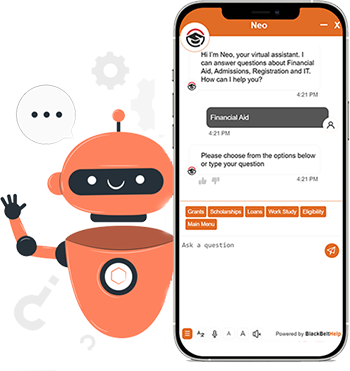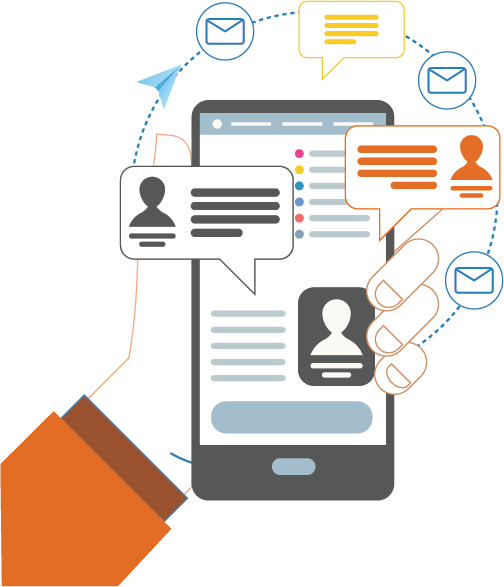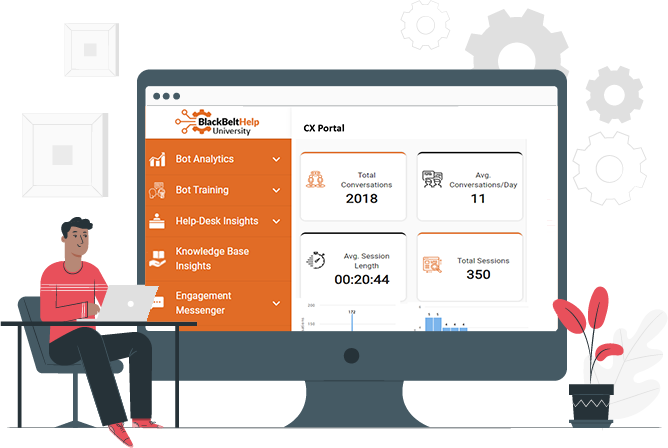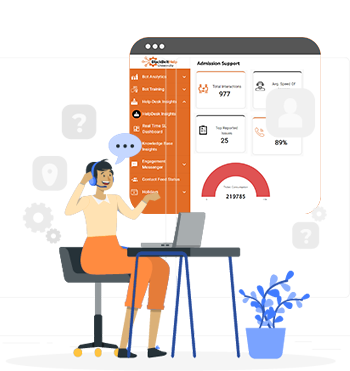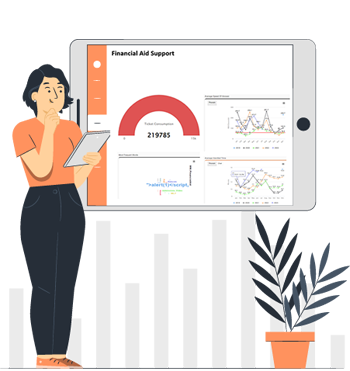How futuristic technologies are going to transform student support services in higher education
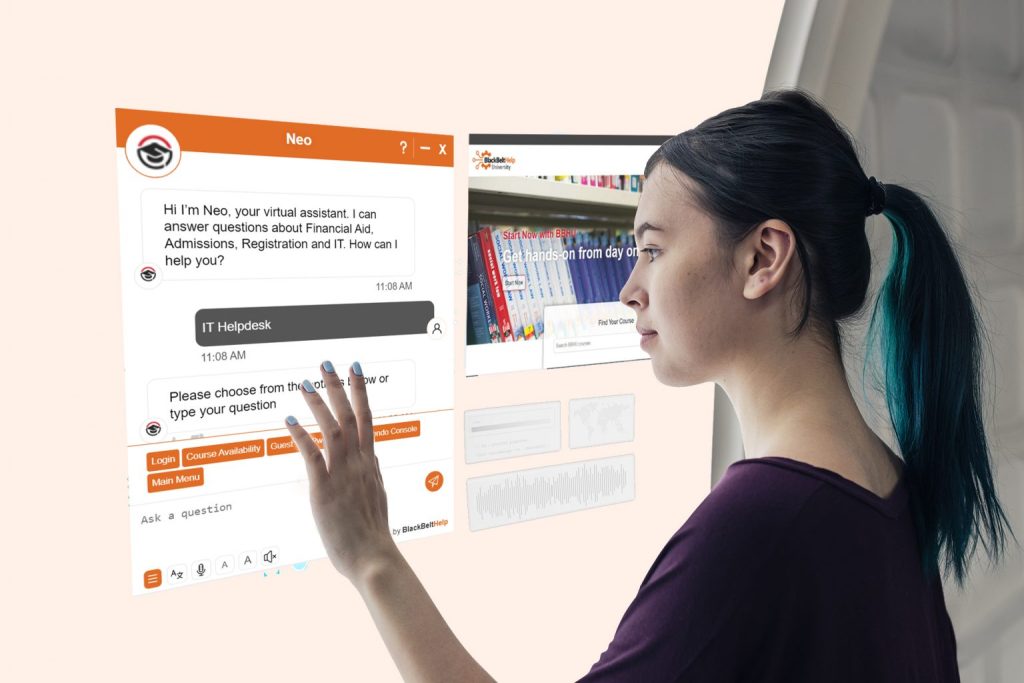
The rapid advancements in technology have significantly transformed the landscape of higher education. From online learning platforms to artificial intelligence-based systems, the education sector is embracing the potential of futuristic technologies to enhance the quality of teaching and learning. However, the impact of these technologies is not limited to academic aspects only; they are also set to revolutionize student support services in higher education.
As a result of the sudden transition to remote learning, universities and colleges had to rapidly adopt new technologies.
As we enter a new era of higher education, there are certain looming questions which we will try to answer today: which technological trends will persist and which ones will fade away? Which technologies will transform student services in higher education?
But firstly, let’s take a closer look at what student support services mean and why are they important.
The term “student support services” encompasses a broad range of activities and services that are designed to support students throughout their academic journey. These services include academic counseling, career guidance, mental health services, financial aid, and more.
Student support services play a vital role in higher education institutions, contributing to the student’s overall success and well-being. These services go beyond academic instruction, addressing the diverse needs and challenges students face during their educational journey. Worldwide, higher education support services are available to students to facilitate student performance (Perez-Encinas and Ammigan, 2016), and contribute to students’ success in their academic and career plans (Lenz-Rashid, 2018). Similarly, Okpych et al. (2020) indicated that student services in higher education were established to increase the chances of students continuing in college and meeting their academic needs, ultimately leading to completing their studies and enriching the skills necessary for college success.
Prior to the pandemic, most student affairs divisions were structured to serve on-campus students. Those institutions with robust online learning initiatives often had separate student support services for online students. But now, every college in the nation has been thrust into operating, or at least strongly weighing, what virtual, online student services look like.
In recent years, institutions have been leveraging technological innovations to enhance the delivery of these services. With the advent of futuristic technologies, this trend is expected to accelerate, bringing significant benefits to students.
Here is a list of some of the futuristic technologies in higher education that redefine the industry:
Artificial Intelligence (AI) Chatbots
Artificial Intelligence (AI) and chatbot technologies have gained significant traction in recent years, and their impact on student support services is expected to soar in 2023.
AI chatbots in higher education are being deployed to provide instant responses to student queries, offer personalized guidance, and assist with basic administrative tasks. These virtual assistants are available 24/7, improving accessibility and reducing response times, ultimately enhancing the student experience. With the help of AI-powered chatbots, institutions can offer 24/7 support to students. These chatbots can assist students in various areas, including academic support, financial aid, and mental health services. They can provide instant answers to common questions, reducing the waiting time for students. Moreover, chatbots can learn from past interactions, which enables them to provide personalized support to each student.
Chatbots can be also effective in helping students get simple answers to their questions without involving someone at the institution (e.g., when do I need to register for a class? or what time does the dining hall close?). This reduces the burden on the current staff and allows them to focus on other strategic tasks.
Chatbots also provide students with the freedom to ask whatever is on their mind as they know they aren’t interacting with a real person. And if the query is more sensitive or complicated, chatbots can efficiently route students to the right person who can address their issue.
Furthermore, AI can also be used to analyze student data and identify areas where students need additional support. For example, AI can be used to analyze student performance data to identify students who are struggling in certain subjects. This information can be used to provide targeted academic support to these students, which can help them improve their grades and increase their chances of success. Investing in an all-encompassing desktop at the institution can help in getting all the student information in one place.
It can be concluded that the future of student support services in higher education in 2023 won’t be complete without AI-chatbots.
Virtual and Augmented Reality (VR/AR)
Virtual and augmented reality technologies are being increasingly used in higher education to create immersive learning experiences. These technologies can also be leveraged to enhance student services in higher education. For example, VR can be used to create simulated environments where students can practice and improve their social and communication skills. This can be particularly beneficial for students who struggle with social anxiety.
AR can be used to provide students with interactive maps of campus buildings, which can help them navigate the campus more easily. AR can also be used to create virtual tours of campus facilities, which can be especially useful for prospective students who are unable to visit the campus in person.
Big Data Analytics
Big data analytics can provide valuable insights into student behavior and help institutions identify areas where they need to provide additional support. For example, data analytics can be used to identify students who are at risk of dropping out of school. This information can be used to provide targeted interventions to help these students succeed.
Big data analytics can also be used to analyze student feedback and identify areas where improvements are needed. For example, institutions can analyze student feedback to identify areas where academic programs need to be revised or where additional support services are needed.
Blockchain
Blockchain is a distributed ledger technology that enables secure, transparent, and immutable data storage and sharing. It has the potential to revolutionize student support services in higher education by providing a secure and transparent platform for sharing student data. For example, institutions can use blockchain to securely store and share student transcripts, certificates, and other academic records. This can help institutions streamline the admissions process and reduce the time and effort required to verify academic credentials.
Blockchain can also be used to track and verify financial aid disbursements. This can help reduce the risk of fraud and ensure that financial aid funds are distributed fairly and transparently.
Personalized Learning and Adaptive Technologies
Personalized learning and adaptive technologies are transforming the way students receive academic support. Adaptive learning platforms analyze student performance and provide tailored content and resources to meet individual needs. Intelligent tutoring systems offer customized guidance and feedback, adapting to the student’s learning pace and preferences. These technologies foster self-paced learning, address knowledge gaps, and promote student engagement and success.
The year 2023 holds immense promise for the integration of advanced technologies in student support services. Next-generation student support services in higher education will see a lot of advancement, ranging from AI-powered chatbots to virtual and augmented reality technologies, these innovations have the potential to enhance the delivery of student support services.
As higher education institutions embrace these technologies in student support services, they will unlock new possibilities for student engagement, learning outcomes, and holistic support. By harnessing the power of technology, institutions can create a student-centric ecosystem that meets the ever-evolving needs and expectations of today’s learners, equipping them for a future of knowledge and opportunity.

